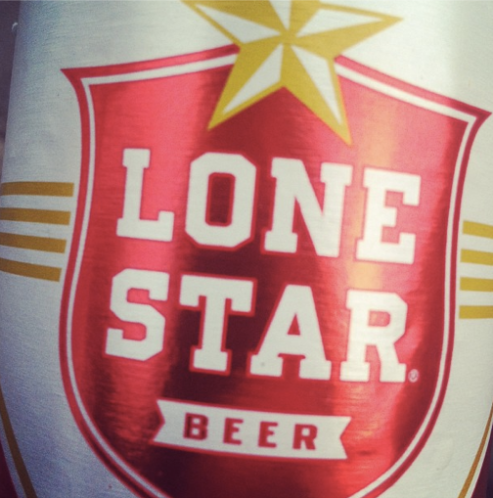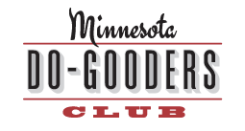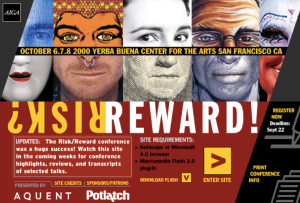Note: An earlier version of this article was published by Design Management Institute and can be found here.
Designers have historically had a passionate connection to their community and an eagerness to use their creative skills toward positive social change. In the last decade we have seen a proliferation of this activity, so much so that a new practice area of design-driven social change has emerged that many are calling social design. Despite this increased activity, however, many design businesses struggle to integrate social design—in a sustainable way—into their business model, or to build new models with social design at the core. At the center of this dilemma is funding, but other factors are important to consider as well. Whether they are addressing a complex global issue like climate change or a hyper-local one, like a community garden in an urban neighborhood, designers must figure out how to do this work in a serious and sustainable business way in order to have meaningful impact over time.
While the term social design is relatively new, the movement has a rich heritage that dates back at least to the 1920s and the Bauhaus, which had an explicit commitment to designing residential housing for the poor. This ethos was echoed by many of the great designers of the last 50 years, such as Samuel Mockbee, Tibor Kalman, and Milton Glaser, and continued by design leaders of the last generation, such as Bill Drenttel, John Bielenberg, and Valerie Casey, who have persistently worked to redefine the role of the designer in society. In the last decade we have seen the emergence of academic programs with a focus on social design, such as the Designmatters program at ArtCenter College of Design and the Master of Arts in Social Design program at Maryland Institute College of Art (MICA). Another indicator of the maturation of this discipline is the number of programs that recognize and support the best social design work, such as Ideas That Matter by the paper company Sappi, Design Ignites Change, Designer’s Accord, and AIGA’s Design for Good, along with conferences like Compostmodern in San Francisco, which has a thematic focus on design for environmental sustainability. Furthermore, the principles of social design align with many of the values that characterize the millennial generation, which comprises an increasing proportion of the design profession. According to a January 2014 Forbes article, “Millennials are focused on making meaning, not just making money.”
One important aspect of the evolution of social design over the last decade is that now designers are being invited into the problem-solving process at earlier and more influential points, whereas the historical role of the designer was often to create the brand, the campaign, the poster, or the website once the core problem was solved by the embedded experts. This trend of greater influence mirrors the increasing power designers are experiencing in many business sectors; as noted in a 2010 Businessweek article, “[Designers] help companies connect and establish a dialogue with consumers, thus enabling firms to innovate more efficiently.”[1] The emergence of human-centered design (or design thinking) methodology pioneered by global firms like IDEO and frog places a premium on design-driven research, divergent ideation, rapid prototyping, and iteration rather than a purely aesthetic focus. This unique approach is helping to position designers as problem solvers and drivers of change, and allowing them to make relevant, meaningful contributions at a much earlier stage than ever before.
What’s wrong with this picture?
In order to maximize this significant opportunity, the traditional business model for a design practice must be reconsidered. Virtually every design business and creative agency is built on the same basic “client service” framework, in which there is a single way to make money: through fees that clients pay in return for design services. For several reasons this model is not appropriate for doing effective design-driven social change over the long term. For instance, in social design there is often not a traditional client: the designer might be self-initiating the project, or there might be a collective of stakeholders, none of whom have the capacity to fund the project. The result is that most social design projects are either self-funded at a minimal level or done on a pro-bono basis. Hence, these social design projects usually get relegated to the periphery of the practice—they are the projects that get worked on after hours or on the weekend. An additional result of this lack of funding is that these projects tend to be done on a compressed time frame of days or weeks, when meaningful social change efforts—including research, assessment, planning, and execution—can take years or even decades.
The rapidly emerging area of online crowd-funding sites and communities like Kickstarter and Crowdrise offers a potential remedy to the funding dilemma. Crowd funding presents an opportunity that simply was not around only a few years ago, and it’s a significant one, with more than $6 billion donated globally in 2013. This is somewhat deceptive, though, because with a few notable exceptions, most crowd-funded projects receive in the range of $5,000-$20,000—not insignificant, but also not enough to stay on the project list of a top design firm for very long.
Another significant opportunity lies in funding from philanthropic foundations and non-governmental organizations (NGOs), which represent an aggregate pool of hundreds of billions of dollars in endowments. Gates Foundation, Rockefeller Foundation, and Robert Wood Johnson Foundation are all prominent examples of foundations with deep and established endowments; locally based organizations and family foundations also offer opportunities. Currently, however, design-driven projects are virtually invisible to these philanthropies, because design businesses are typically set up as for-profit corporations or LLCs, which are not eligible to directly apply for grant funding. This puts most design firms in the position of relying on partnerships with third-party nonprofits in order to gain access to funds for project work—a cumbersome arrangement, at best.
Designers are beginning to recognize this dilemma, and new practice models are emerging. Tomorrow Partners (Berkeley, CA), and Greater Good Studio and Firebelly Design (both in Chicago), are all examples of design businesses that are tinkering with the traditional model. Some are establishing themselves as a non-profit 501(c)3, and others form a nonprofit to sit alongside the traditional for-profit (IDEO and IDEO.org are examples of this); either option gives designers direct access to foundation money. A relatively new option is the L3C business classification, a hybrid structure that combines the legal and tax flexibility of a traditional LLC, the social benefits of a nonprofit organization, and the branding and market positioning advantages of a social enterprise.
Rich Hollant, founder of Hartford, CT-based Co:Lab, has intentionally built his staff to be positioned for foundation funding in a sustainable way. “Co:Lab is an LLC, and we access grant funding through collaborations with (c)3s and foundations,” Hollant says. “Our business development person has a nonprofit management background and has deep experience with foundations. She helps us advise (c)3s through the grant process as a means of subsidizing project funding. We also take a consulting role in the sustainability plans of community-based coalitions and help our partners optimize their in-place funds.”
One NGO that recognizes the potential of human-centered design is UNICEF, which has made a significant investment by building an internal innovation team practicing social design with a focus on children in the developing world: “We aim to engage and partner with the right organizations and individuals from the public, private and academic sectors to support us by co-developing user-driven innovations.”[2]
It’s time to open the door
As we reconsider our business model, designers must also address our methodological approach. Design has a stigma of being a mysterious and exclusive craft that would be contaminated—rather than enriched—by the direct involvement of clients or stakeholders, and designers have a similar rap of being control freaks obsessed with a perfect outcome. Social design, on the other hand, requires designers to open their process and to be inclusive, transparent, nimble and iterative. In order to understand deeply complex social issues and develop credible solutions to them, we depend on the active participation of experts in that area. This means that designers need to be developing networks in communities where these subject matter experts reside. It also means that a key skill for a social designer will be that of facilitation, since the format of the multi-disciplinary design workshop becomes key to drawing out the insights of disparate participants. AIGA, the professional association for design recently launched Facilitation by Design, a series of workshops to help designers build the skills to “successfully facilitate a diverse group and create effective solutions across a variety of sectors.”
These changes to business model and method are triggering reactions throughout the design profession. Many of the top academic design programs are taking on the challenge of building curriculum to train the emerging generation of social designers. At MICA, the one-year Master of Arts in Social Design program “prepares the next generation of creative leaders through collaborative practice-based learning opportunities, exploring social issues, testing processes & defining the future of design.”[3] Still, the career path for graduates of this pioneering program will be murky until the practice space matures in the years to come.
Whether in the studio setting, the academic world, or within large organizations, ambitious and forward-thinking designers are recognizing that social design offers a significant opportunity in an ever-more-competitive design market. They are also coming to terms with the fact that integrating social design practices effectively and sustainably in their business model—so this work contributes to the bottom-line success of a business rather than jeopardizing it—will be the key to long-term success.
[1] Ravi Sawhney and Deepa Prahalad, “The Role of Design in Business,” Businessweek, Feb. 1, 2010.
[2] http://www.unicefinnovation.org
[3] http://www.micasocialdesign.com
 What a great morning with the designers of Autodesk at their XSummit15 in San Francisco. Thanks so much to Maria Giudice, VP of User Experience at Autodesk for the invitation. Here is a list of links from the presentation as well as a PDF of the slides (and check out the special bonus PDF of the IBM Design Thinking Field Guide, filled with great activities and facilitator notes).
What a great morning with the designers of Autodesk at their XSummit15 in San Francisco. Thanks so much to Maria Giudice, VP of User Experience at Autodesk for the invitation. Here is a list of links from the presentation as well as a PDF of the slides (and check out the special bonus PDF of the IBM Design Thinking Field Guide, filled with great activities and facilitator notes).




